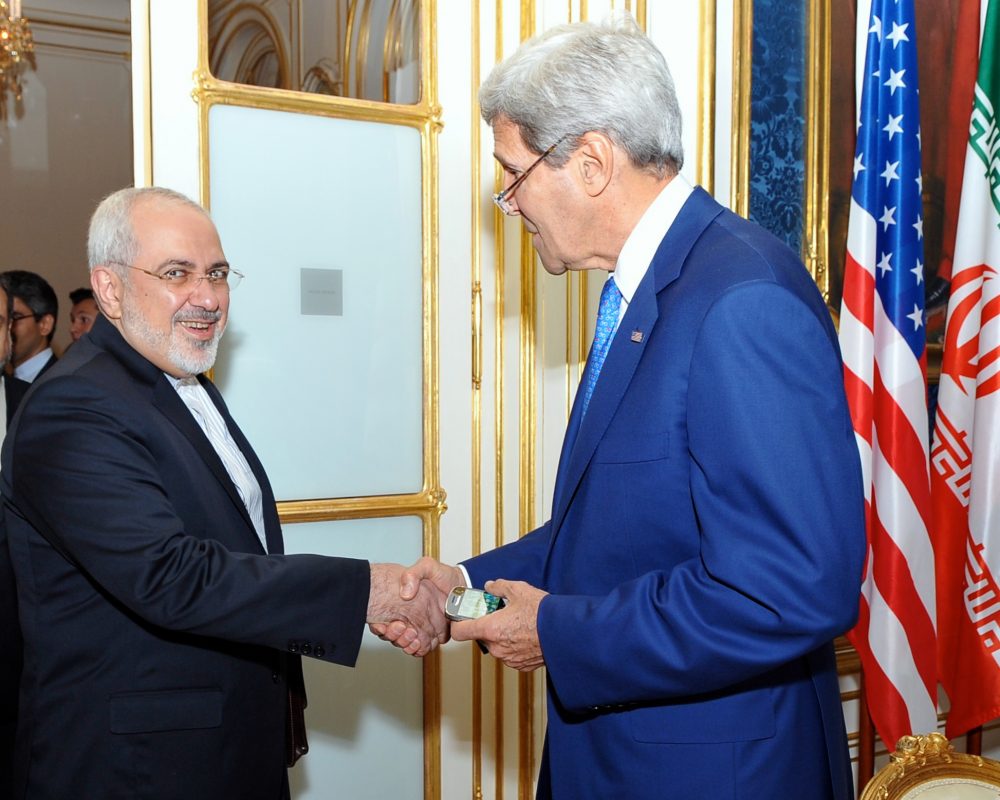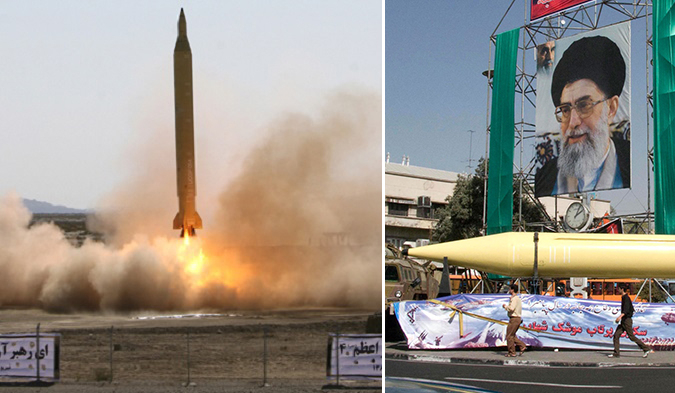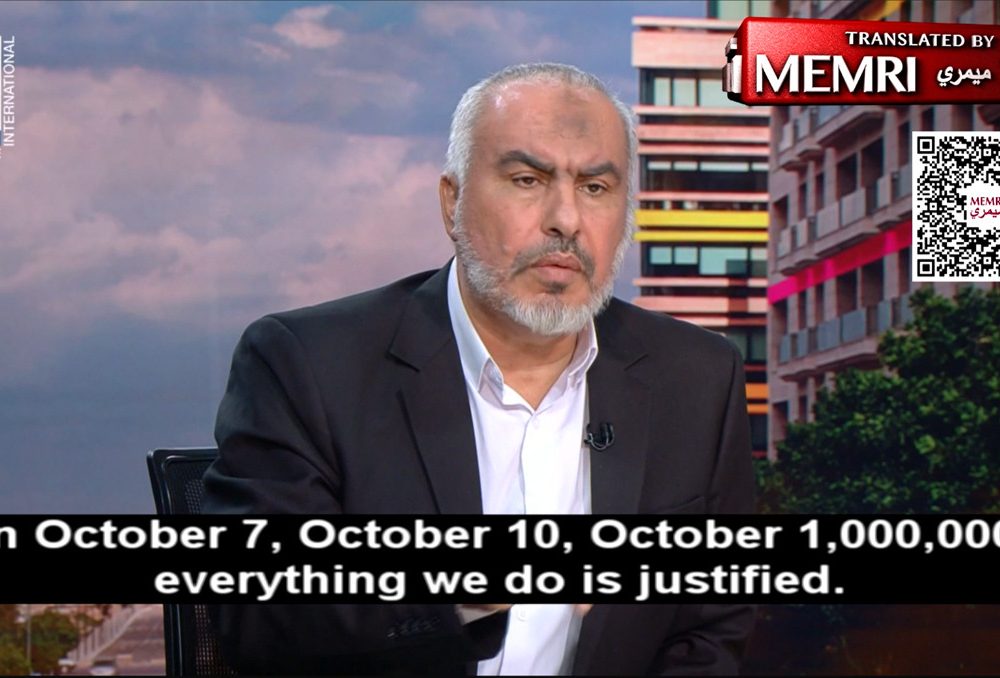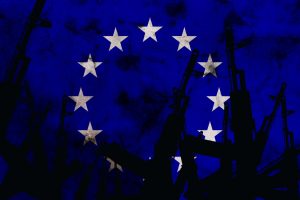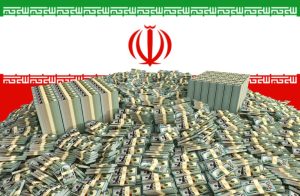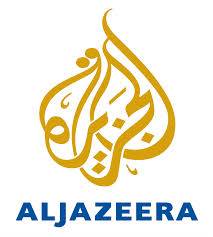In 2017, the next U.S. administration will face the choice of keeping the U.S.-Iran 2015 nuclear deal — still unsigned by Iran — or of creating a new approach to eliminate Iran as an emerging nuclear power.
Supporters of the current deal, the Joint Comprehensive Plan of Action (JCPOA), will continue to argue that Iran has implemented the important provisions of the deal; that current violations and uncertainties are not critical to fulfilling the agreement, and that troublesome activities by Iran’s leadership are just designed to appease some hardliners opposed to any concessions to the United States, “the Great Satan.”
A significant number of senior security policy specialists, on the other hand, as well as members of Congress, apparently have serious doubts that Iran will fulfill the terms of the nuclear framework.
There is also growing concern that Iran already has a nuclear weapon, built with technology acquired in part from its North Korean partner, as well as intercontinental ballistic missiles (ICBMs) capable of delivering it.
Moreover, as a result of the JCPOA, Iran will be receiving in excess of $100 billion from previously sanctioned oil-sales revenue. This windfall makes its further missile and nuclear development easily affordable.
In what direction, then, should the next American president go?
That question requires analysis of two key issues. First, what does the U.S. know of Iran’s nuclear and missile activities? Second, what is the objective of these Iranian activities?
It might help to examine Iran’s relationship with its key military partner, North Korea.
Since at least 1988, Iran has manufactured nuclear-weapons-related neutron initiators and bridge-wire detonators. It has also experimented with implosion nuclear devices, all of which are directly related to any serious effort to build nuclear weapons. Iran could therefore very well already have a nuclear weapons capability, one that could be used against America and American interests, as it has openly and repeatedly vowed to do.
Ironically, even if Iran had signed the JCPOA deal, the regime is allowed to continue to enrich more uranium, modernize its centrifuges, and continue to develop technologies applicable to nuclear weapons.
Satellite photos show that Iran continues to build underground nuclear research and missile facilities, while upgrading its Emad missiles. At the same time, Iran has received shipments of large-diameter rocket engines from North Korea.
Both of these enhanced missile technologies mean that Iranian missile ranges extend beyond the Middle East and can soon begin to reach U.S. territory, in addition to Europe.
Breezily dismissing previous UN resolutions that prohibit nuclear-capable long-range missile tests, Iran has test-fired some 140 missiles since 2010 — some with ranges greater than 2000 kilometers. It has also, according to former CIA director R. James Woolsey, begun designing a nuclear warhead for its Shahab-III missile.
Iran is evidently seeking to exercise military power beyond the Middle East to coerce, blackmail and terrorize its enemies, including the United States.
This capability will further restrict the freedom of military and diplomatic action by the United States and its allies in the Mediterranean, in southern Europe and South Asia — as it is undoubtedly meant to.
Meanwhile, Iran’s nuclear activities continue. Most of the media have ignored satellites photos showing that Iran has hidden its Parchin military nuclear facility by completely bulldozing the area and then building an underground nuclear facility off-limits to any inspections.
This lack of transparency is made more alarming by a recent decision of the U.N.’s nuclear watchdog, the International Atomic Energy Administration (IAEA), no longer to report details of Iran’s violations of the JCPOA.
Parallel to its missile and nuclear activity, Iran continues its activities as the world’s #1 terror master, as determined by official reports of the U.S. Department of State.
These activities hardy seem a reflection of a new and moderate Iran, willing to become a partner with the West in bringing peace to the Middle East. Does anyone actually believe that these activities are the harbinger of an arrangement for Iran to learn to “share” the region with the Kingdom of Saudi Arabia, as President Obama suggested in a recent interview in The Atlantic?
The U.N., by agreement among the JCPOA parties, is reporting less from Iran than previously, and there are no interviews with Iranian nuclear scientists or inspections of Iran’s military facilities.
The response of the U.S. and the international community is apparently not to challenge Iran but, in the words of the U.S. Department of State, to “avoid misunderstanding” Iran’s activities. Unfortunately, this posture enables Iran to transform every question into a legalistic quarrel.
The result is that U.S. administration spokesmen gravely “promise to deal with” Iranian violations in a lawyerly fashion, but then unilaterally take off the table effective diplomatic and military tools to stop Iran from “cheating.”
In the process, the UN can do little more than complain that Iran is “not supposed to be doing that.” After all, what can the UN do if its key members signal a reluctance to get serious about enforcing the terms of an unsigned agreement — or even, as we have repeatedly observed, a signed one such as the NPT?
Iran has not only failed to sign the JCPOA agreement, it also passed a parliamentary resolution reiterating Iran’s right to engage in nuclear activities the JCPOA forbids.
With international corporations eager to do business with Iran, the strength of instruments of international law, such as sanctions designed to contain Iran’s nuclear ambitions, have eroded. Iran regularly — and, it appears, successfully — calls the bluff of the business-ravenous international community.
The JCPOA’s Faustian bargain has, of course, the effect of accelerating the Iran’s nuclear activities. As these activities accelerate, the promise by U.S. Secretary of State John Kerry that national and international sanctions would “snap back” in case of Iranian bad-faith become even more meaningless than they were in the first place.
Matters are not any better at the UN. Even as Iran openly disregarded the terms of the JPCOA and UN resolutions, the UN Secretary-General was urging all parties to act with “restraint” and to avoid “hasty action.”
Given such weak American and UN responses, it is no wonder Iran repeatedly threatens to walk away, should efforts be made actually to enforce key provisions of the nuclear accord or resolutions barring missile tests.
Iran’s purpose seems obvious. By blocking transparency for its nuclear activities and evading enforcement of the terms of the JCPOA, Iran gets to move forward with its nuclear weapons development even as it pretends not to.
As Aaron David Miller, vice president of the Woodrow Wilson International Center for Scholars, noted, the result of this strategy is that “…a fundamental shift in the balance of power is taking place in the region in Iran’s favor,” especially as states in the region fear Iran will soon be a nuclear armed power.
As for North Korea’s role in Iran’s nuclear program, Iran and North Korea have an agreement to exchange missile and nuclear technology
Iran’s military leaders have also been to North Korea to “observe” Pyongyang’s ICBM and nuclear tests. Tehran has even established a presence at a military base just south of the Chinese border.
Any Iranian-North Korean covert nuclear cooperation is also easily camouflaged or hidden, further undermining the notion that Iran is somehow voluntarily restricting its nuclear activities.
In light of these untrustworthy Iranian activities, how can one explain the sense of security held by many supporters of the JCPOA? Why does the administration continue to insist its deal is working?
Many supporters of the JCPOA accept, for example, the assurances made in March by Stratfor’s George Friedman, who admits Iran has tested ballistic missiles and has a nuclear program — but he is not, he says, worried. He assumes that preparations for Iranian missile launch could easily be seen by the American and allied satellites, and the rockets destroyed on the ground before they could be launched.
Friedman evidently assumes that Iranian rockets only use liquid propellants. Liquid propellants require days to dispense prior to launch. Keeping a rocket fueled with a liquid propellant is highly dangerous: liquid fuel is unstable and subject to explosion. Thus the liquid fueling process of a rocket or missile is elaborate, above ground, time consuming, and can readily be seen by satellites.
Friedman also evidently incorrectly appears to assume that Iranian and North Korean warheads have not been sufficiently hardened and are not sufficiently accurate, thus making them not particularly dependable weapons. Taken together, he concludes, there is little threat from Iran’s ballistic missile or nuclear capability.
But what are the facts?
A missile can be launched from the sea (as Iran has done at least twice) by a freighter, which has no return address. Even the threat of missile launch can have significant coercive political effect, particularly if one does not know from where it will be fired.
Given the connection between Iran’s terrorist proxy, Hezbollah, and Latin American’s terror groups and drug cartels, a missile attack originating from the maritime areas immediately adjacent to the U.S., especially from the Caribbean or, in the future, Cuba, is a distinct possibility.
Additionally, solid-fueled rockets — unlike liquid-fueled ones — can be launched at any time from tunnels or mountain silos with no notice. Iran has mastered this capability both with the Sajjil missile and with other missiles whose ranges reach 2000 kilometers, such as the Shahab-III.
Iran’s missiles are also increasingly mobile, a capacity North Korea has developed and which it appears to have shared with Iran. Missile mobility makes quick detection of missile launch sites particularly difficult.
Moreover, a nuclear missile configured for an electromagnetic pulse (EMP) does not need a heat shield or an accurate warhead. It can be detonated 70 kilometers above the Earth and does not fall through the atmosphere where a heat shield would be necessary. As for accuracy, if it exploded anywhere in the atmosphere between Atlanta and Boston, it would knock out most of America’s electrical grid.
In addition to these mistaken technical assumptions are the equally questionable political assumptions many analysts make about Iran’s objectives and motives.
One is that Iran’s “moderates” are its controlling authority. A second is that Iran’s terrorism and nuclear ambitions will easily diminish if America “behaves.”
The U.S. administration claims that if Iran continues to engage in “extremist” behavior, such as launching missile tests or supporting terrorist groups such as the Yemeni rebels, businesses will not be willing to invest in Iran.
U.S. president Barack Obama said on April 1, 2016, “When they [Iran] launch ballistic missiles with slogans calling for the destruction of Israel, that makes businesses nervous.”
The administration seems to be assuming that the prospects of business investment in Iran will certainly take precedence over Iran’s continued revolutionary and terrorist activities, and that the “moderates” in Iran will “of course” choose the former (business), and pressure the “extremists” in Iran not to choose the latter (terrorism).
But Iran apparently does not see the situation this way. The mullahs have been echoing the American leftist line that the cause of “turmoil” in the Middle East is bullying by the United States. [1]
Moreover, when the mullahs support the Yemeni-based rebels, and Hezbollah in Lebanon, presumably to expand the influence of the Iranian regime in the Middle East, they claim they are defensive actions. Such “defensive actions,” according to Iran, cannot accurately be characterized as “terrorism” by the U.S. and therefore cannot be grounds for the U.S. to curtail business investment in, or maintain sanctions against, Iran.
Iran can thereby pretend to be defending of its own security instead of its real role: trying expand its influence through revolutionary terror.[2]
Part of this façade is Iran’s advocacy for a nuclear-free zone in the Middle East — in reality a simplistic feint to try to disarm Israel and distract attention from Iran’s terrorist activities.
The reality is even more deadly. Iran’s regime has previously killed thousands of Americans in Iraq, Afghanistan, Lebanon and Saudi Arabia, as well as having been complicit in the 9/11 attacks on the U.S.[3]
Iran’s missile and nuclear activity thus should be examined in light of — and not as distinct from: 1) Iran’s destruction of Lebanese sovereignty; 2) Iran’s massive support for militias and civil war in Iraq; 3) Iran’s military, financial and diplomatic support for Assad’s regime in Syria; 4) Iran’s inciting armed unrest in Bahrain, and 5) Iran’s providing weapons for the rebels in Yemen’s civil war.
Are those the actions of a “moderate” regime?
Iran claims it does not see its military activities as “terrorism;” the United States does. The decision facing Iran is not a simple matter of trading in their jihadi suicide vests for a business suit and briefcase.
Iran’s theocratic leaders seem to be seeking hegemonic control of all Middle East oil wells and all the Middle East Muslims, including the Islamic religious shrines in Mecca and Medina in the Kingdom of Saudi Arabia.
Terror is evidently their top tool to accomplish that.
This seemingly overarching Iranian goal explains many of the conflicts in the Middle East and the potential implications for life in the free world. Bringing Iraq and Saudi Arabia into Iran’s orbit would give Iran essential control of two-thirds of the world’s store of conventional hydrocarbons. [4]
Anthony Cordesman explains that this would give Iran tremendous economic leverage over the industrial world, by giving Iran control of 20% of the world’s exports of oil and 35% of all oil moved by sea. This leverage is especially significant given the most optimistic projections that put U.S. dependence on Middle Eastern oil in 2040 still at 32% of all U.S. oil supplies.
At some point, Iran may confidently declare that it can confront any “threat” from the United States. The means to do so could easily include using nuclear weapons against the U.S., or threatening to do so. How credible, then, would be America’s promises that its military would stop the mullahs from becoming a regional power? As credible as many of America’s other promises?
In addition, should Iran’s mullahs not prefer to stay in power, they might determine that such a confrontation could also usher in the advent of the Mahdi, the messianic heir of Mohammed in Shia Islam, and through him the wished-for “End of Times.”
Dr. Peter Huessy is President of GeoStrategic Analysis, a defense consulting firm he founded in 1981, and was the senior defense consultant at the National Defense University Foundation for more than 20 years. He is now the National Security Fellow at the AFPC, and Senior Defense Consultant at the Air Force Association.
[1] “American Foreign Policy in a Globalized World,” edited by David P. Forsythe, Patrice C. MacMahon
[2] Stephen Kinzer’s book “All the Shah’s Men: An American Coup and the Roots of Middle East Terror” is the most popular example of this narrative.
[3] In particular, see Morton Klein in the Algemeiner, on September 11, 2015: “Iran’s key role in the 9/11 attacks was detailed in the U.S. District Court’s Findings of Fact in Havlish v. bin Laden, et al — a case brought by 9/11 victims against Al Qaeda, the Islamic Republic of Iran, Hezbollah and numerous other Iranian and Iranian-backed entities. The case was the culmination of years of investigation prompted by information initially uncovered by the 9/11 Commission. Overwhelming evidence of Iran’s complicity included testimony from experts and a top former Iranian regime insider, in addition to damning documents, such as a May 2001 memo on behalf of Iranian Supreme Leader, Ali Khamenei, discussing communications regarding Al Qaeda’s then upcoming attack.”
See also The Daily Beast on essay by Philip Shenon who explains: “The court papers also include sworn statements from staff members of the 9/11 Commission, including Dietrich Snell, a former top terrorism prosecutor at the Justice Department, who says in his affidavit that ‘there is clear and convincing evidence the government of Iran provided material support to al Qaeda in the planning and execution of the 9/11 attack.’ He said the support came in the form of ‘facilitating the travel of members of the 9/11 conspiracy to and from Afghanistan and Pakistan, in which countries, in my opinion and as found by the 9/11 Commission, the plot was hatched and developed.'”
[4] “Saudi Arabia, Iran, and the Clash within a Civilization” by Tony Cordesmann, February 3, 2014, Center for Strategic and International Studies, Washington, D.C., and “Iran’s deadly Ambitions: The Islamic Republic’s Quest for Global Power” by Ilan Berman, published August 2015 by the American Foreign Policy Council, Washington, D.C.
















